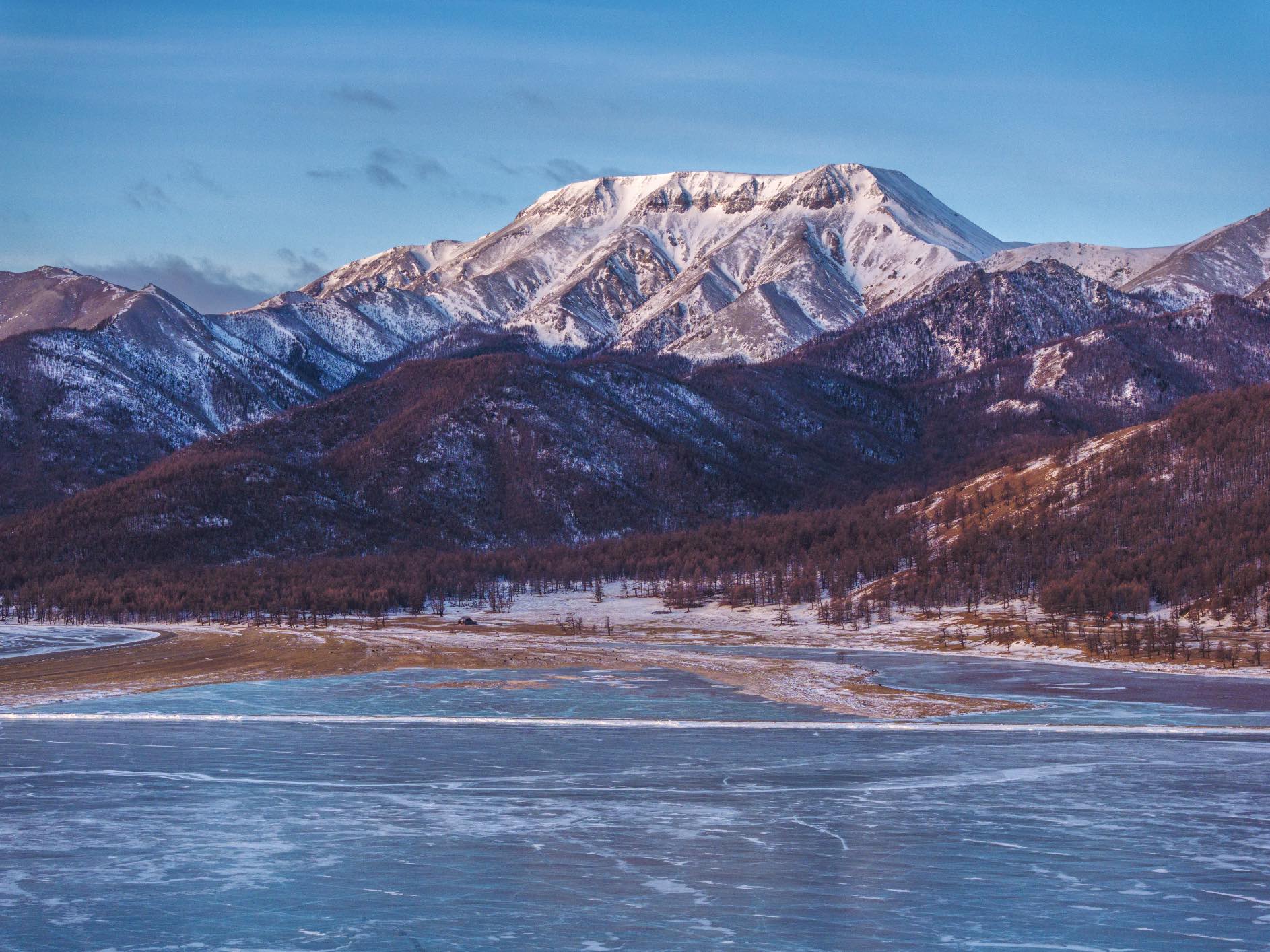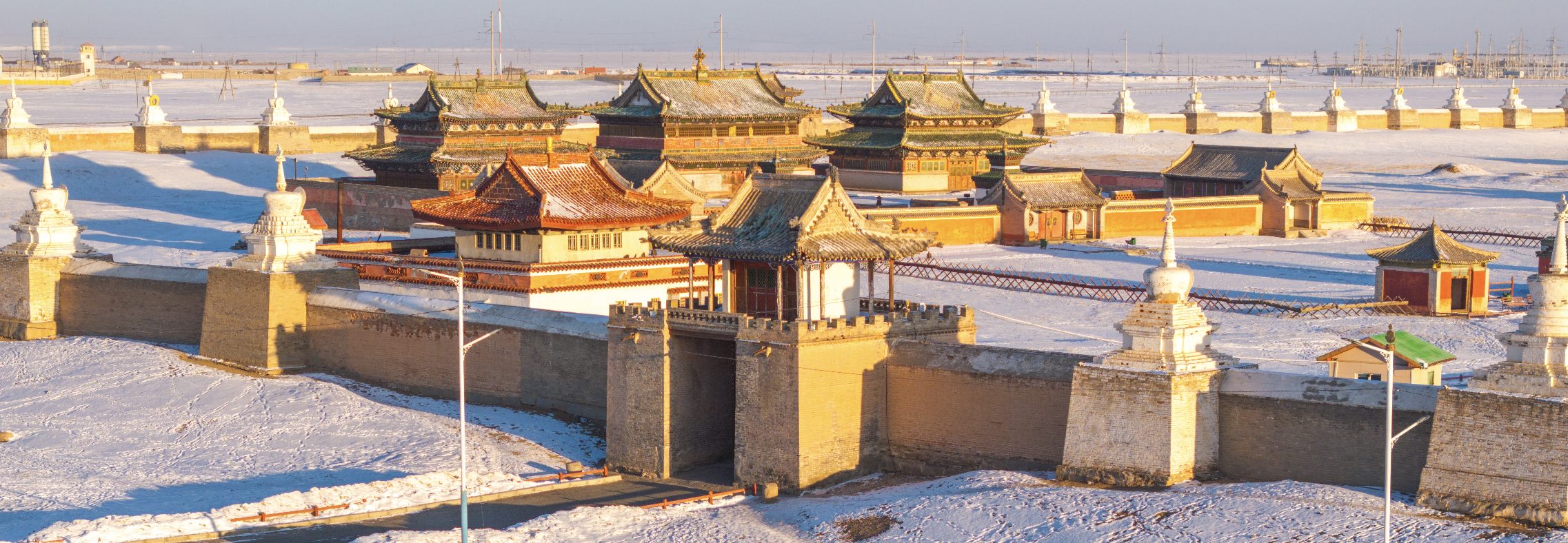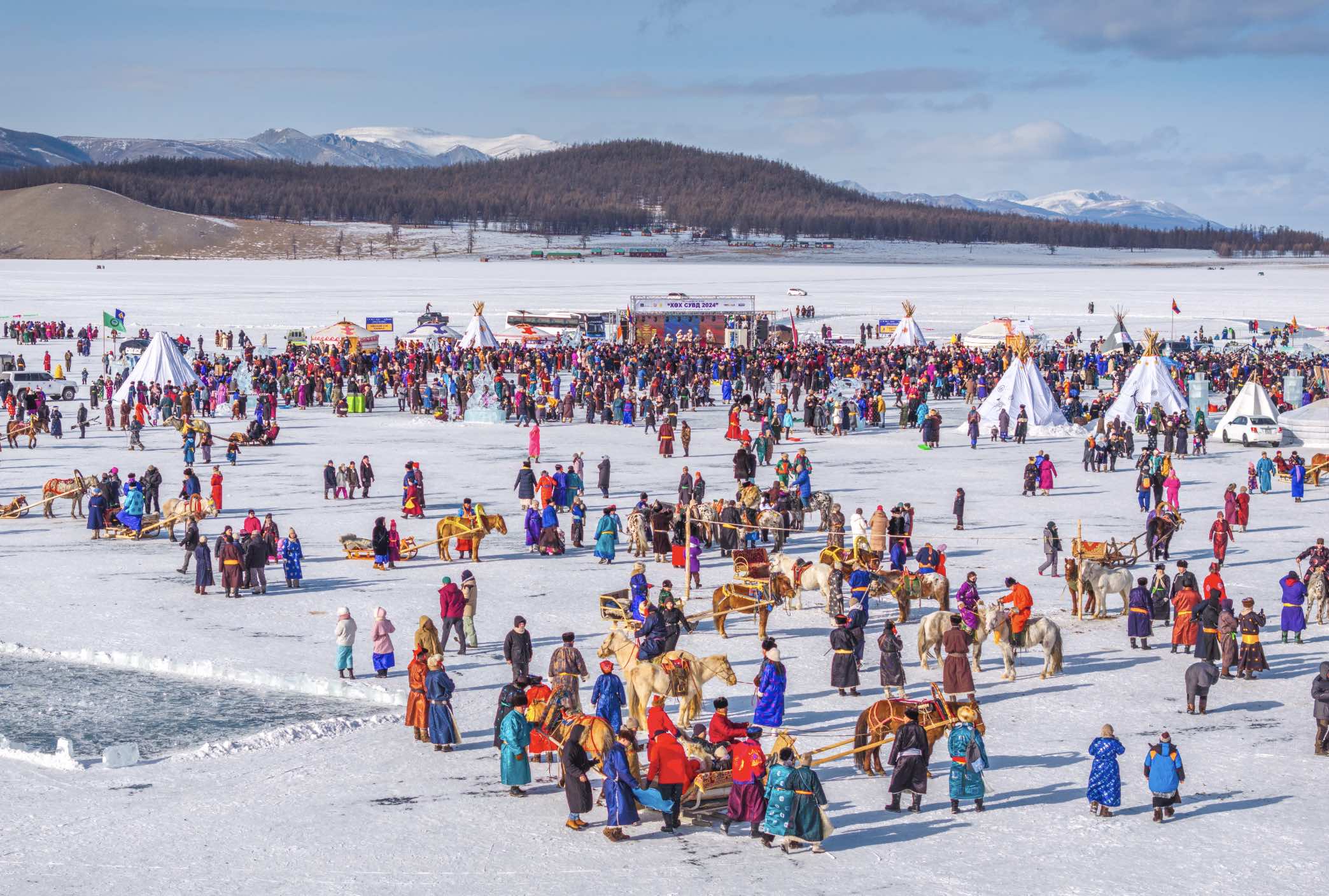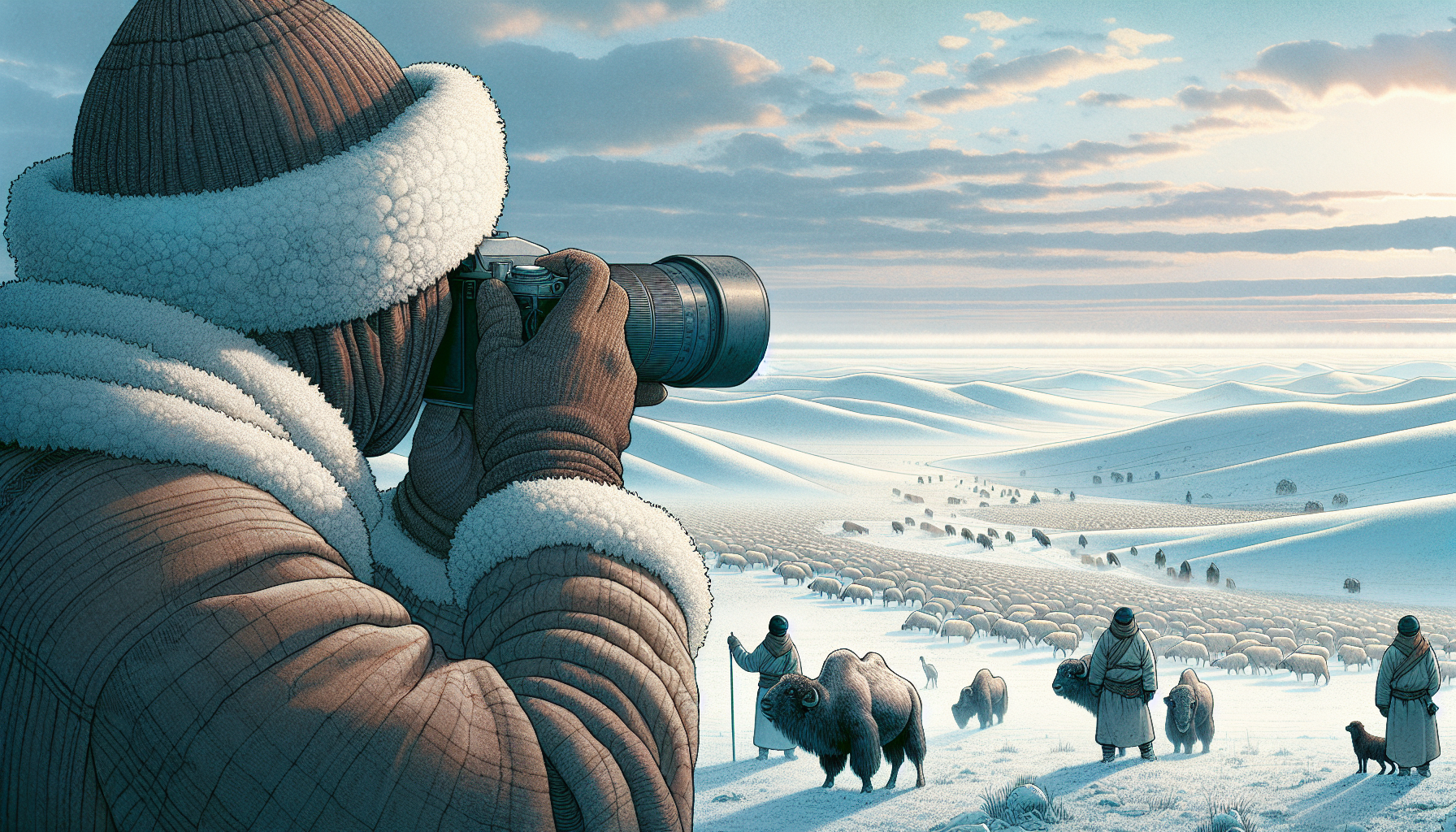Why winter is maybe the best time to travel to Mongolia
Contact us for travel suggestions
Discover Why Winter Is Maybe the Best Time to Travel to Mongolia
Why winter is the best time to travel to Mongolia surprises many: beneath its icy reputation lies a hotbed of cultural richness, unexpected warmth, and adventures that defy the season’s chill. This is when you can encounter Mongolia at its most authentic, from the shimmering Ice Festival of Khuvsgul Lake to the traditional ger warmth amidst the frozen steppe. In this guide, we’ll reveal why embracing Mongolia’s winter season might just unlock the most memorable journey you’ll ever take.

Key Takeaways
- Mongolia during winter offers a dramatic landscape of frozen rivers and white steppes, hosting unique natural phenomena like the dzud, and providing exceptionally sunny days that sharpen the beauty of this season.
- The winter season in Mongolia facilitates intimate cultural experiences with nomadic herders, revealing their sustainable practices and warm hospitality, and is punctuated by vibrant festivals such as the Thousand Camel Festival and the Khuvsgul Lake Ice Festival.
- Adventurous activities like the Ice Highway Tour and dog sledding excursions, combined with the exploration of traditional Mongolian cuisine and serene retreats like Terelj National Park, offer a diverse and immersive experience for winter travelers.
Winter Wonderland Unveiled: The Magic of Mongolia's Cold Season

As December’s chill sets in, Mongolia transforms into a winter wonderland, unveiling endless white steppes and frozen rivers that become nature’s own art exhibit. The Mongolian winter, with its extreme continental climate, challenges the brave with sub-zero temperatures but rewards the adventurous with vivid blue skies against the stark white landscapes. During the winter season, the dzud, a unique winter phenomenon, is a testament to the resilience of the terrain and its inhabitants.
Despite the harsh conditions, Mongolia’s myriad sunny days intensify the beauty of the cold season, illuminating the vast winter landscapes with a remarkable brilliance. Although temperatures in the north can plummet to a staggering -35°C, the exhilaration of enduring such extremes forms an unforgettable part of the Mongolian winter visit.
Exclusive Encounters with Nomadic Herders
Venturing into the Mongolian countryside in winter brings you face-to-face with the nomadic herders, whose lives are woven into the fabric of the frozen landscape. These resilient individuals prepare for the harsh winter by using sustainable practices, such as selectively slaughtering livestock to ensure their families’ sustenance during the cold winters. The warmth of their hospitality shines through, offering visitors shelter in their traditional gers and a rare glimpse into the tenacity required to thrive in these harsh winter conditions.
This intimate encounter with nomadic people is more than just a visit – it’s an immersion into a way of life that has withstood the test of time. This provides a chance to be enlightened and moved by the local families’ resilience and warmth, as they share their lives and narratives with winter explorers in Mongolia.
Thrills on Ice: The Charm of Mongolia's Winter Festivals

Mongolia’s winter is not just a season of survival, but also a time of exuberant celebration. The Thousand Camel Festival in the Gobi Desert and the Khuvsgul Lake Ice Festival are just two of the events that animate the cold stand, turning the winter wonderland into a hub of cultural expression. Far from being mere distractions, these festivals pay tribute to both tradition and nature, as reflected in the conservation initiatives for the glacial Khagiin Khar Lake and the festivities honouring the camels, essential to the life of nomadic herders.
With a panorama of horse sleigh races, ice sculptures, and traditional Mongolian food, these winter festivals reflect the vibrant spirit of Mongolia. The Khuvsgul Lake Ice Festival, in particular, offers a dazzling showcase of the nation’s diverse regional costumes, folk music, and a tapestry of activities that capture the essence of the Mongolian winter.
A Journey Through the Ice Highway Tour
Embarking on the Ice Highway Tour is to enter a world where the stark beauty of Ulaanbaatar, Kharkhorin, and Northern Khuvsgul is magnified by winter’s embrace. Comfort is not forgotten, with the tour providing cozy accommodations in Erdenet City’s hotels, ensuring that after a day’s exploration, a warm welcome awaits. Led by native Mongolian guides with deep countryside roots, the tour utilizes rugged 4x4 vehicles, offering the thrill of driving alongside experienced drivers who navigate the winter landscapes with ease.
This tour guarantees significant cultural interactions in Central Asia, with visits to nomadic families forming an integral part of the experience. For those fortunate to travel in early March, the Khuvsgol Ice Festival invites participation in traditional contests and a celebration of life in the heart of winter. Additionally, a visit to Khentii National Park offers a glimpse into the region’s natural beauty.
Spanning approximately 1950 km over four days, the Ice Highway Tour is an adventurous journey through Mongolia’s diverse winter scapes, offering a glimpse into the soul of this enchanting country.
The Allure of Western Mongolia: Home of the Kazakh Eagle Hunters
In the rugged terrains of Western Mongolia, the ancient tradition of Kazakh eagle hunting soars against the winter sky. This thousand-year-old practice, having survived the Russian conquests of the 1860s, remains a testament to the cultural resilience of the Kazakh people. The bond between the eagle hunters and their majestic Golden Eagles is one forged through loyalty and respect, with the larger female eagles being the preferred companions due to their size and fidelity.
The Golden Eagle Festival, a UNESCO World Heritage Cultural Event, often enthralls those visiting Mongolia, as eagle hunters across all ages convene to showcase their abilities. This festival is not merely a competition but a celebration of a partnership that, after a decade, honors the eagles by releasing them back into the wild to ensure their continued lineage. It is a poignant reminder of the harmony that can exist between humans and the natural world.
Horse and Dog Sledding Adventures Across Frozen Terrains

Imagine gliding through Mongolia’s serene winter landscapes, led by a team of eager Siberian Huskies, with the soft whisper of sled runners on snow as your only companion. Dog sledding in Mongolia is not just a mode of transport; it’s an immersive adventure that connects you to the soul of the north. These journeys, possible in the picturesque settings of Terelj National Park and the expansive Khuvsgul Lake, are accessible from November to March, offering a unique beauty that only winter can unveil.
This universally inviting experience allows participants from ages five to seventy to steer their own sled, all under the watchful eye of experienced professionals. Alongside the thrill of the ride, dog sledding also provides an opportunity to engage with the local nomadic community, sharing in their traditions and feasting on Mongolian delicacies, making it a truly holistic cultural adventure.
Culinary Delights in a Mongolian Winter
Mongolian winters may be cold, but the food is warm and abundant. The country’s traditional cuisine, perfect for the winter months, features hearty dishes like ‘buuz’ dumplings and ‘tsuivan’ stir-fried noodles, rich in meat and designed to fortify against the chill. Incorporating dairy products, such as dried curds, further enhances nourishment, delivering vital nutrients to combat the cold.
Cooking methods such as ‘khorkhog’ and ‘boodog’ are not just about preparing a meal; they are an elemental dance with fire and earth, imbuing the food with a rustic flavor that is uniquely Mongolian. Special occasions bring forth dishes like ‘banshtai shul’ and ‘bantan’, which are enjoyed with traditional beverages such as airag and suutei tsai, creating a culinary experience that is as rich in taste as it is in cultural significance.
Serenity in Snow: The Peaceful Retreats of Terelj National Park

In the heart of the cold, the snow-draped landscapes of Terelj National Park offer a sanctuary of peace and quietude. The Yestii Hot Water Springs and the Ariyabal meditation temple provide warmth and spiritual respite from the harsh winter, inviting visitors to reconnect with themselves in a setting that feels worlds away from the hustle of daily life.
The tranquility of the park also provides an ideal setting for winter leisure activities. Here, one can glide across the ice, partake in horse sleigh races, or simply stroll through the valleys, each step a meditation in the crisp winter air.
Capturing the Frozen Beauty: Photography in Mongolia's Winter

The stark beauty of Mongolia’s winter is a photographer’s dream, offering an opportunity to capture images that are as breathtaking as they are unique. To do justice to this land, photographers should be equipped with lightweight gear and protective accessories, ready to adapt to the swift changes in weather that can turn an ordinary scene into a canvas of extraordinary light and shadow.
When capturing the faces of Mongolia, it’s important to approach with respect and sensitivity, asking for permission and perhaps offering a Polaroid photo as a token of gratitude. Wildlife sightings may require patience and guidance from local experts, but the reward of a stunning photo is well worth the wait.
Joining a photo tour can provide enhanced access to pristine locations and the chance to capture the essence of Mongolia’s winter with the guidance of experienced photographers. If you’re looking to visit Mongolia, this is an excellent opportunity to do so while honing your photography skills.
Preparing for Your Mongolian Winter Expedition
Adequate preparation is the cornerstone of a delightful experience in Mongolia’s winter wonderland. Here are some essential items to include in your winter wardrobe:
- Thermal base layers
- Insulating middle layers
- Windproof outer layer
- Wool scarves
- Hats
- Insulated boots
Dressing in layers and accessorizing properly will ensure that you stay warm as you explore the frozen expanses.
For those planning to camp, a 4-season down sleeping bag rated for extreme cold, an insulated mat, and warm pajamas are indispensable for a comfortable night’s rest. Packing essentials like a waterproof bag for important documents, sunglasses for the bright winter sun, and a reusable water bottle will make your journey smoother and more enjoyable.
Navigating Mongolia's Winter: Transportation and Accommodation
A successful winter journey through Mongolia requires a combination of thoughtful planning and an adventurous spirit. Within the country, a range of transportation options are available, from renting vehicles to taking commercial flights, allowing you to traverse the vast landscapes with relative ease. In Ulaanbaatar, licensed taxi services provide a reliable means of getting around the city, while the New Ulaanbaatar International Airport connects you to the rest of the world.
Accommodation in Ulaanbaatar caters to a variety of preferences, ranging from luxurious hotels to more modest lodgings. Beyond the capital, it’s advisable to book early to secure your stay, with private Ger tents offering an authentic and cozy option for those on photography workshops or winter tours.
Summary
Mongolia’s winter is a symphony of stark beauty, cultural richness, and unexpected warmth. From the snow-covered steppes to the ancient traditions of nomadic herders and eagle hunters, each experience is a thread in the intricate tapestry of this country’s unique allure. Whether you’re gliding across ice on a dogsled or savoring the hearty flavors of Mongolian cuisine, a journey to Mongolia in winter is an adventure for the soul, promising memories that glow as brightly as the winter stars.
Frequently Asked Questions
Is Mongolia worth visiting in winter?
Yes, Mongolia is worth visiting in winter for its stunning snow-capped mountains, frozen lakes, and unique cultural experiences. The winter landscapes offer a whole new perspective of the country.
What time of year is best to visit Mongolia?
The best time to visit Mongolia is between mid-June and late August, during the summer season when the weather is pleasant and the scenery is lush and green.
What is the coldest month in Mongolia?
The coldest month in Mongolia is January, with temperatures reaching as low as -30°C to -34°C in various mountain regions.
Do I need any special equipment for dog sledding in Mongolia?
Yes, you should bring warm clothing and a sleeping bag; local guides will provide the necessary gear for dog sledding in Mongolia.
Are there any special dietary considerations for trying Mongolian food in winter?
Yes, Mongolian winter cuisine is rich in meat and dairy, making it unsuitable for all dietary restrictions. However, it is nutritious and designed to provide warmth and energy during the cold months.
 Mongolian horses in winter
Mongolian horses in winter